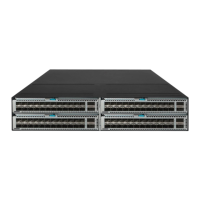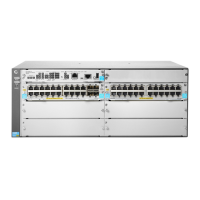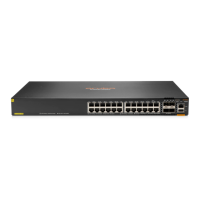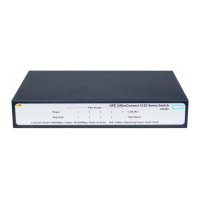185
Name: VLAN 0005
Tagged ports:
Ten-GigabitEthernet1/0/1
Untagged ports:
Ten-GigabitEthernet1/0/2
Ten-GigabitEthernet1/0/3
VLAN ID: 2
VLAN type: Static
Private VLAN type: Secondary
Route interface: Not configured
Description: VLAN 0002
Name: VLAN 0002
Tagged ports:
Ten-GigabitEthernet1/0/1
Untagged ports:
Ten-GigabitEthernet1/0/2
VLAN ID: 3
VLAN type: Static
Private VLAN type: Secondary
Route interface: Not configured
Description: VLAN 0003
Name: VLAN 0003
Tagged ports:
Ten-GigabitEthernet1/0/1
Untagged ports:
Ten-GigabitEthernet1/0/3
The output shows that:
• The trunk promiscuous port (Ten-GigabitEthernet 1/0/1) is a tagged member of primary VLAN 5
and secondary VLANs 2 and 3.
• Host port Ten-GigabitEthernet 1/0/2 is an untagged member of primary VLAN 5 and secondary
VLAN 2.
• Host port Ten-GigabitEthernet 1/0/3 is an untagged member of primary VLAN 5 and secondary
VLAN 3.
Trunk promiscuous and trunk secondary port configuration
example
Network requirements
As shown in Figure 61, configure the private VLAN feature to meet the following requirements:
• VLANs 10 and 20 are primary VLANs on Device A. The uplink port (Ten-GigabitEthernet 1/0/5)
on Device A permits the packets from VLANs 10 and 20 to pass through tagged.
• VLANs 11, 12, 21, and 22 are secondary VLANs on Device A.
{ Downlink port Ten-GigabitEthernet 1/0/2 permits the packets from secondary VLANs 11 and
21 to pass through tagged.
{ Downlink port Ten-GigabitEthernet 1/0/1 permits secondary VLAN 22.

